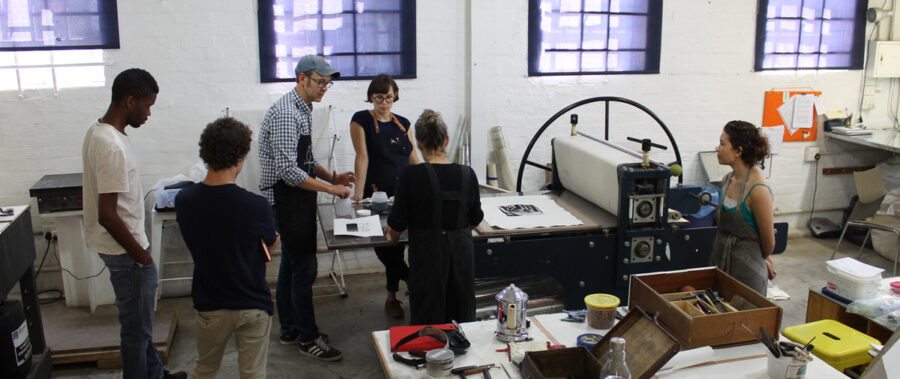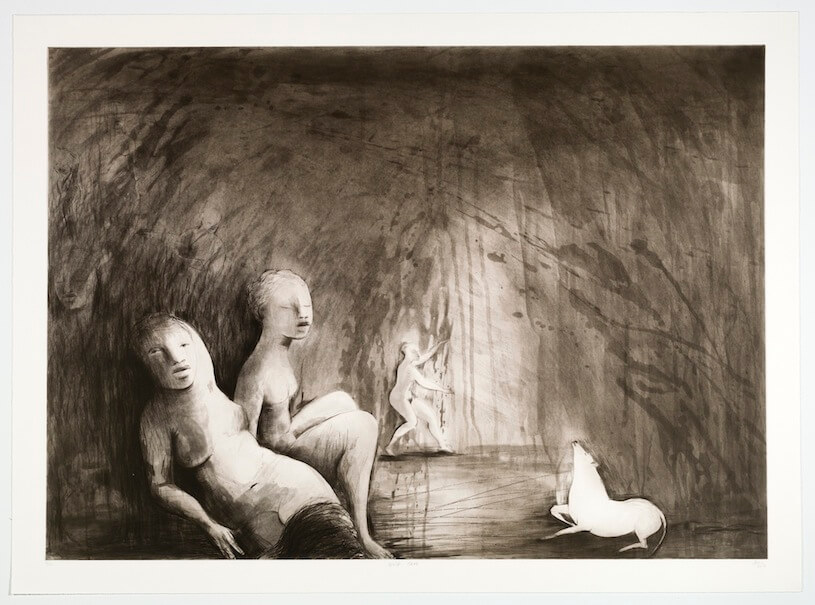
Wolf Cave, 2018, Drypoint and spitbite 90 x 121 cm
Deborah Bell’s Wolf Cave (2018) is a hauntingly introspective work that invites viewers into a liminal space – a place of transformation. Made as part of the collaborative print project Invocations to the Plate with David Krut Workshop (DKW) and visiting Master Printer Phil Sanders in Johannesburg in 2017. This drypoint and spitbite etching reflects Bell’s ongoing exploration of the border between mortality and immortality, presence and absence, and the intimate dialogue between the physical and the immaterial. .
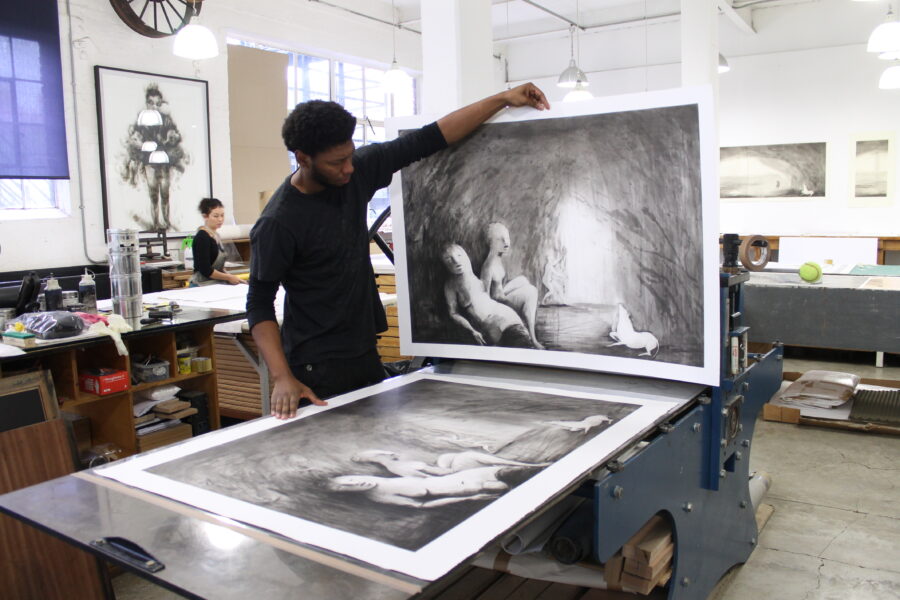
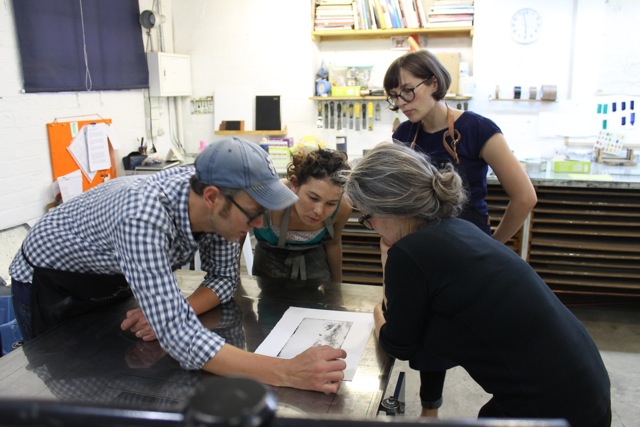
At the heart of Wolf Cave is the tension between the inner and outer worlds. The cave as a symbol of introspection, a metaphorical womb, and the open expanse of the outside world. Bell herself describes this dichotomy: “The cave and the open expanse are about the inner and the outer, the womb and the world – and going inwards as opposed to only expressing ‘out there’.” This inward journey is expressed through the placement of figures, whose pale, sculptural bodies seem to emerge from the darkness of the cave wall, while a lone white wolf sits in an alert, liminal space, suggesting transformation or guardianship of this threshold between worlds.
The print’s gestural richness and atmospheric depth are achieved through Bell’s physical, process-driven approach to printmaking. Drypoint prints are created by scratching an image into a metal plate with a needle or other sharp tools. This technique allows the greatest freedom of line, from the most delicate hairline to the heaviest gash. Spitbite aquatint involves painting strong acid directly onto the aquatint of a prepared plate. Depending upon the time the acid is left on the plate, light to dark tones can be achieved.
These techniques have allowed her to “push and pull” the image, creating raw, gouged lines and soft tones that echoes the immediacy of drawing. Bell’s working method is one of constant evolution — marks are made, erased, and reworked, creating layers of time and presence within the plate.
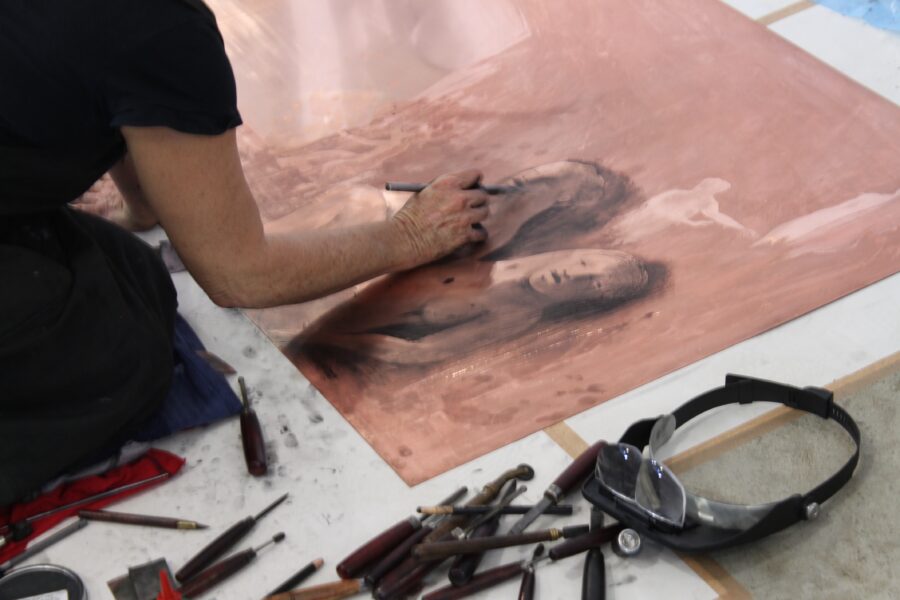
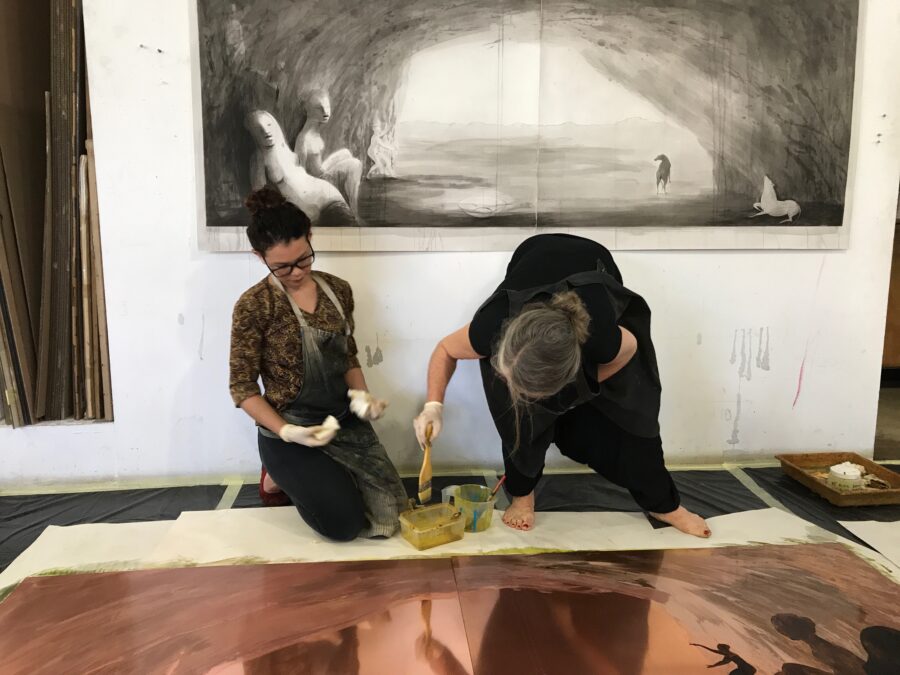
The Wolf Cave image itself evolved through a series of deconstructions and reconstructions. Initially conceived as part of the large diptych She Wolf, Bell discovered new dimensions by separating and overlaying the plates, allowing the figures and forms to shift, deepen, and transform. In the final version, the wolf and the bowl — once part of the larger, multi-plate composition — are isolated, inviting viewers to consider not just what is shown, but what is hidden. This layered approach speaks to Bell’s belief in image-making as a poetic rather than a prosaic act.
Bell’s artistic practice is rooted in her visual notebooks, where spontaneous sketches and fragmented ideas are gathered and later become the source material for new works. She compares these sketchbooks to a “dictionary” of imagery, a personal visual language that she draws from to create new works. The process of making Wolf Cave, through collaboration, experimentation, and deconstruction, reflects this same openness to discovery and transformation.
